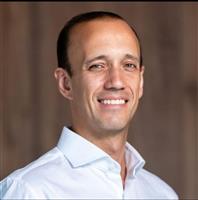
Former retirees are successful in business/jobs in countries
1) Summary -
This short and fundamental article aims to demonstrate to Companies, Governments, State-owned companies, etc. (which still intend to continue and to compete, after the new phases of Trump and Elon Musk-DOGE in the USA and others in the World) that they will have to study and to diagnose their environments and make urgent and appropriate decisions to face the workforce crises and the crises of reduced/little business efficiency and the strong increases in costs/difficulties in acquisitions and supplies – until then unthinkable or unpredictable or invisible –, which have already silently and greatly increased in the last 05 years in almost all Countries, already becoming a strong trend for everyone.
Furthermore, in terms of very semi elderly workforce/retirement contributions/solutions, in today's world, we have - at least - 04 new dangerous realities, added together and in frank, silent, little discussed and almost unaccepted evolutions, namely: 1) The number of elderly and semi-elderly people grows much more as a percentage of the total population in many countries than the number of young people capable of working and producing and contributing to everyone and/or genuinely interested in the jobs offered. Japan is expected to register a more pronounced change, with almost 40.0% of its workforce already 55 years old or older. Even China will feel the effects: the population aged 65 or over is expected to double by 2050”; 2) These older people already consume much more than in the last 30 years, in addition to needing much more differentiated and even more expensive food, beverages and services that are more difficult to produce, transport and sell, which requires a new vision and new industrial, business and government preparation, etc., including the strong increase in the price and greater demand for new Health and Retirement Plans; 3) There is a dizzying growth in the number of young people from the so-called “Generation Z” or “Zoomers” or “GenZ”, more from “Generation Alpha” and who, as the main characteristics of almost everyone and new common behaviors, are much more likely to consume much less but demand much from their potential employers, who are insistent, and to access social networks much more in the workplace and leisure/at home, etc., even because they are already their vices, and/or to not accept or be flexible in their schedules and/or to be much more likely to quickly leave their few desired jobs and/or not even want to external work or even work at home). So, how will Governments and Companies deal with far fewer well-prepared, few available and not enthusiastic workforces and, worse, with clear reductions in total future contributors? Now, without adequate and monitored supply and motivation of the workforce and that does not want to consume or to pay taxes/contributions to the retirement systems in the countries, etc., nor accept being trained or encouraged or charged/monitored, how will Countries and Companies continue to compete in a World - even a Trumpist and/or copying World - that, perhaps, will tend to close/isolate itself, soon, as before? 4) The already high growth in sales and very fast and much cheaper deliveries via the global Internet (e-commerce and other forms) are already killing some small/medium companies that manufacture some items and, above all, wholesalers, retailers and previous global transportation systems and many items. And don't think that the young people of Generation Z are participating or are even concerned about this.
In some countries - more evolved and more socially and environmentally operative - a solution that has already been found to reduce and/or even to eliminate all of the above issues and that is already working very well and expanding is the rehiring of retirees, the so-called “baby boomers” and/or “Generation X”, by large companies and governments, on a part-time or full-time basis and for various reasons and forms, etc. The many data that I present show that this may be one of the solutions (even cheaper), although it still needs to be much more debated and adopted and accepted in Brazil, as always much slower in such knowledge/decisions, unfortunately. Renowned global employers and economists have even stated that the large and highly educated generation of “baby boomers” has developed skills that are difficult to replace, as most of them are much more responsible/motivating/monitoring/resilient and happy with life, etc. In the last quarter of 2017, 32.0% of Americans between 65 to 69 years old had a second or third job. “Older Americans are working more and those under 65 are working less, a trend that is expected to continue and expand. By 2024, 36.0% of American people between 65 to 69 years old would-be active participants in the labor market, compared to only 22.0% in 1994.”
“A number of factors are keeping older Americans already in the current workforce: 1) Many are healthier and live longer than previous generations; 2) Some choose not to retire fully because they enjoy their jobs or simply want to stay active; 3) Others need more money because they want to get more out of life, meaning they spend more and thus contribute more and consume more.” “Longer lifespans and rising health care costs have made retirement more expensive, while stagnant wages and the decline in traditional pensions have made it harder to save enough.”
2.) Some Modern World Concepts plus Individual and Team Operational Results from large and medium-sized Companies already active in Retirement new contractions as Auxiliary and/or as Advisory/Motivating/Supervising Labor (being temporary and/or target-based hiring, more part-time, of SOME former Retirees for various purposes and for various reasons and in various ways) –
“The population of the planet on 01/01/1950, which was 2.47 billion inhabitants, had already increased to 6.1 billion in 2000 and could reach a peak population of 10.3 billion inhabitants in 2084 and, only then, decrease slightly to 10.2 billion inhabitants in 2100.”
“On the other hand, the population aged 0 to 14 years, from 858 million people in 1950, increased to 1.87 billion inhabitants in 2000 and may reach a peak of 2.0 billion people in 2021, only then decreasing to 1.68 billion children and adolescents in 2100, THAT IS, JUST DOUBLE THAN THE 1950 figure. The population aged 15 to 59 years, which was 1.4 billion people in 1950, may reach 3.7 billion in 2000, reaching a peak of 5.8 billion people in 2067, and only then begin to decrease in the last 3 decades of the century, reaching 5.6 billion people in 2100”, THEN, MORE THAN TRIPLE THE 1950 number.
Therefore, in addition to having to feed, care for and pay for many more elderly people, the majority retired, at the end of the century, the number of young contributors and workers, on the contrary, will reduce their participation in the total world population, that is, in a possible situation of even a shortage of certain foods some more expensive (elderly food is quite demanding and complicated to produce and to obtain, even using much more water per hectare/year) plus, idem, of reductions in the number of active workers/contributors and, above all, of strong expansions in the need for many more resources to finance so much consumption and, worse, in a situation of shortage of ten well-prepared labor more than active contributors.
“For the authors of the diagnoses (see link below), the only age group that will grow continuously throughout the 21st century will be that of 60 years and over, which had only 195 million elderly people in 1950; increased to 600 million elderly people in the year 2000; reached 1.0 billion people in 2018 and should reach 2.0 billion people in 2048 and is projected to reach 3.0 billion elderly people in 2100”, THAT IS, almost - incredible - FIFTEEN TIMES compared to 1950.
Thus, in the world, the ONLY PART OF THE FUTURE POPULATION THAT is already growing at a rate of about 3.0% per year is that of those over 60 years old OR MORE. Even better is that the majority are already retired from their initial job, but it is perfectly possible to still work and produce for another 20 to 30 years, even as a direct operational or auxiliary workforce and/or advisory and/or supervisory and/or training and also in motivational/encouraging aspects and even supervising other colleagues and/or even younger managers. Many of them are still in good health situation, as they are already eating very well with their initial and only retirement.
Additionally, “according to projections from the UN Population Division, the total world population is expected to grow 4.1 times between 1950 to 2100, with the 0-14 age group expected to grow 2.0 times in the 150 years in question, but the population aged 15 to 59 is expected to grow 3.9 times and the population of elderly people aged 60 and over is expected to grow an impressive 15.4 times in the period. This means that the proportion of elderly people in the total population will increase significantly, characterizing a profound process of population aging.”
“Also, according to the UN, in proportional terms, the age group of 0-14 years represented 34.7% of the total population in 1950, fell to 30.6% in the year 2000 and is expected to be only 16.5% of the total population in 2100. The age group of 15-59 years represented 58% of the total population in 1950, rose to 60.3% in the year 2000, peaked at 62.5% in 2010 and is expected to fall to 55% in 2100. The group of elderly people aged 60 and over, which represented 7.9% of the total population in 1950, reached 9.8% in the year 2000, reached 14% in 2023 and is expected to reach 30% of the total population in 2100”.
“Demographic decline number more population aging are inexorable trends of the 21st century, but this does not necessarily imply a decline in social indicators. The world will be a better place to live if the population decline of countries is accompanied by an increase in “per capita” income, greater social equity and a significant reduction in the ecological footprint and environmental deficit. A world with fewer people can be a world with greater human and ecological well-being.”
“For the authors: There are no rich countries with a good young age structure. Getting rich and getting old are synchronous phenomena. The future can be promising for any country if civil society, private enterprise and public policies work together to guarantee universal and quality education, guarantee comprehensive health, guarantee full employment and decent work and combat ageism. The future of prosperity depends on a synergy between all age groups and on the release of the productive and creative potential of the silver generation that will have an increasingly greater influence on society.”
See more data in PORTUGUESE at https://portaldoenvelhecimento.com.br/os-novos-numeros-da-populacao-e-do-envelhecimento-mundial-e-brasileiro/ .
In Brazil, according to the excellent Brazilian consultancy “Shift” (see more data and reports in the link at the end of the chapter on Brazil), the population of Brazil (on January 1st) which was 52.6 million inhabitants in 1950 increased to 172.9 million in the year 2000; it reached 209.9 million in 2022 (about 6 million more than indicated by the 2022 Brazilian demographic census); it should reach its peak population in 2042 with 219.3 million inhabitants and should decrease to 164.0 million inhabitants in 2100. In the second half of the current century, Brazil should lose about 50 million inhabitants.”
“The Brazilian population aged 0 to 14, which was 22 million people in 1950, peaked at 53.3 million children and adolescents in 1993 and is expected to decrease throughout the current century until reaching 26.4 million people in 2100”.
Meanwhile, the Brazilian population aged 15 to 59, which was 28.4 million people in 1950, rose to 108.4 million in 2000; it is expected to peak in 2031, with 138.7 million people, and is expected to decrease to 80.4 million people in 2100.
“Therefore, the working-age population aged 15 to 59 is expected to lose around 58 million people between 1931 and 2100.”
“According to projections from the UN Population Division, Brazil’s total population is expected to grow 3.2 times between 1950 and 2100, the 0-14 age group is expected to decrease by around 10.0% in the 150 years in question, the population aged 15 to 59 is expected to grow 2.8 times and the elderly population aged 60 and over is expected to experience a significant increase of 31.2 times in the period. This means that the proportion of elderly people in Brazil’s total population will increase exponentially, characterizing a profound and rapid process of population aging.”
“In proportional terms, the age group of 0-14 years represented 42.5% of the total population of Brazil in 1950, fell to 30.2% in the year 2000 and is expected to remain at only 12% of the total population in 2100. The age group of 15-59 years represented 53.9% of the total population in 1950, rose to 62.7% in the year 2000, peaked at around 66% in the second decade of the 21st century and is expected to fall to 49% in 2100. The Brazilian group of elderly people aged 60 and over, which represented 4% of the total population in 1950, reached 7.7% in the year 2000, reached 15.3% in 2023 and is expected to reach 39% of the total population in 2100”.
“Population decline will occur sooner in Brazil than in the rest of the world and, proportionally, Brazil will have a much faster and more profound population aging than the world average. The number of elderly people aged 60 and over will surpass the number of children and adolescents aged 0 to 14 in 2030 in Brazil and in 2084 in the rest of the world. There will be an inversion of the population pyramid.”
In current more in future World, let us now analyze how the experiences by the fundamental return of some retirees to the job market (situations also called total or partial temporary retirements of the so-called “baby boomers”) to work intensively as and where in the functions listed above.
“This is certainly already happening, as some authors, in most of the most developed countries in the world, including Brazil, even as a trend, although here, Universities, Companies and Consulting firms are not well prepared to accept or even properly diagnose such facts and major business needs/demands (especially using older people to operate more, to monitor and even to reduce losses and even certain to employee or customer thefts (no more employee queries on “Facebook”, “Watts-app”, “Tik Tok”, “Reels” etc. during working hours).
According to the excellent Brazilian consultancy Shift (see more they data at the end of the chapter on Brazil): “Never have so many professionals aged 55 or over been active at the same time in the (global) job market. This trend, a reflection of the aging of the population, is part of a scenario of major changes in the world of work, with the adoption of Generative AI (Artificial Intelligence) and a high appreciation and demand for soft skills”.
“Among the richest countries, which form the G7, the expectation was that workers aged 55+ would exceed 25.0% of the workforce by 2031 – an increase of 10.0% compared to 2011 levels. Japan is expected to register a more pronounced change, with almost 40.0% of its workforce aged 55 or over. Even China will feel the effects: the population aged 65+ is expected to double by 2050”.
Also, here in Brazil, some more competitive companies already operate (as in the US and Europe - see below) mainly for these elderly people to train and/or to motivate their fellow employees and even their younger managers, all in a way that is perhaps much cheaper than our possible and already weak distance learning/postgraduate courses, etc. (distance and via the internet and/or semi-presential learning with weak, repetitive and tiring “power point” in which even a Brazilian Minister recently criticized some renowned consultancies when they tried to sell him the false projects of these so-called paper railways).
In these cases - clearly with almost no future business results - some powerful Brazilian private or public companies or state-owned companies, perhaps even deluded/forced, even demand and/or even reward and/or even publish in their corporate balance sheets - and to attract investors - more on their websites about such training/education efforts and everything, even though they already know, beforehand, that perhaps they are so that some schools/consultants can even pretend to train their employees (perhaps such companies are really looking much more at good government incentives for this, including reducing taxes, even with collective knowledge of the very few or almost no real/competitive results for everyone) and in which perhaps many pretend to learn and to use in the company (there is already field research that shows that participants cannot even remember the main subjects after 01 year of study and, even worse, the names of the teachers who taught them)”.
Also, in USA recently the Donald Trump administration, through the Department of Government Efficiency (DOGE), led by Elon Musk, is determined to cut contracts considered “useless” by giant and persistent Consulting firms (from the 4 to 8 largest of those considered the best in the business world, public and state), and that, often, they are very expensive and limit themselves to delivering superficial reports, like PowerPoint presentations that do not add real value to the projects.
In the US, there is already a phenomenon whereby Americans can no longer retire permanently after the age of 70. In the generation of “baby boomers” (i.e. those born in the demographic explosion after World War II), more and more people continue working after the traditional retirement age of 65. In the last quarter of 2017, 32.0% of Americans between the ages of 65 to 69 had a second or third job. As of 2017 (2nd half of the year), almost 19.0% of people aged 65 and over were working at least part-time, according to the US employment report.
“Older Americans are working more and those under 65 are working less, a trend that is expected to continue, according to projections from the U.S. Bureau of Labor Statistics (BLS). By 2024, 36.0 percent of people ages 65 to 69 will be active labor force participants, the BLS says, up from just 22.0 percent in 1994.”
“A number of factors are keeping older Americans in the workforce: 1) Many are healthier and live longer than previous generations; 2) Some choose not to retire fully because they enjoy their jobs or simply want to stay active; 3) Others need more money because they “want to get more out of life, meaning they spend more and thus contribute and consume more.”
“Also, the longer you work, the easier it is to afford a comfortable retirement. Longer lifespans and rising health care costs have made retirement more expensive, while stagnant wages and the decline in traditional pensions have made it harder to save enough.”
“According to a recent survey by Robert Half Consulting, more than half of managers in the United States said they had hired an employee who retired and decided to return to work in recent years. This data reveals a growing trend and a growing demand for experienced and mature professionals in today's job market. “Attractive compensation”. “Also, about a fifth of retired professionals interviewed in a survey by Robert Half Consulting in the US said they are receiving higher compensation now than before, due to the greater demand for their skills. The experience and skills acquired over the years are highly valued and rewarded in today's job market”.
See more data in PORTUGUESE at: https://economia.uol.com.br/noticias/bloomberg/2017/07/10/trabalho-depois-dos-70-americano-nao-conseguem-se-aposentar.htm?cmpid=copiaecola
According to the excellent Brazilian consultancy “Shift” (see more at the end of the chapter on Brazil), in the United States, approximately 11.0 million people aged 65 or older were employed at the end of 2024, which represented 19.0% of the workforce in this age group. A Gallup survey revealed that 41.0% of American workers expected to work beyond the age of 65, a considerable increase compared to just 12.0% three decades ago. The projection was that adults aged 65 or older will already represent 8.6% of the workforce in 2032, compared to 6.6% in 2022. This demographic group is expected to account for 57.0% of the growth in the workforce during this period, indicating a robust increase in the participation of older workers in the labor market.
In Europe, the rehiring of older workers was already breathing new life into the labor market in 2019. “In a rapidly aging Europe, employers were finding ways to keep older employees on the job: either by keeping them on for longer or by hiring them as new hires. Workers aged 55 to 74 saw 85.0% growth in employment in the eurozone between 2012 and 2018, according to the Organization for Economic Cooperation and Development (OECD). This trend goes beyond what is considered normal in labor markets, when younger workers – cheaper and more flexible – are the most sought after (but with much less knowledge, experience and patience/resilience). Employers and economists, however, argue that the large and highly educated generation of “baby boomers” has developed skills that are difficult to replace” (as described).
“Aware of the rapidly aging workforce, executives at German automaker BMW AG began an experiment at a plant in Bavaria a few years ago. They staffed an assembly line exclusively with older workers, with an average age of 50. With minor adjustments and a total outlay of about €40,000 (Us $ 45,000) — in ergonomic chairs, softer wooden floors, lenses to magnify smaller parts — the line became one of BMW’s most efficient.” “We found that older workers were just as productive as younger workers and even better in terms of quality,” said a BMW human resources spokesman in Munich. The line design has since been replicated at BMW plants in Germany and elsewhere.”
“Meanwhile, according to OECD data, about three-quarters of Germans aged 55 to 64 were working. In Italy and France, the employment rate for the same age group had risen to 55.0%. The same rate for Americans remained stable at around 65.0%.”
“Until 2018, economists assumed that worker productivity peaked between ages 30 to 45 years, before falling rapidly after age 60. But some research has challenged this assumption: Examining large data sets, economists at Munich Technical University found that productivity does not change much with workers reaching age 65.”
See more data in PORTUGUESE at: https://www.maturi.com.br/blog/mercado-de-trabalho-maturi-europa
In Brazil, at the end of 2024, the excellent, genuinely Brazilian business management and training consultancy “The Shift” published the following diagnosis: “The Future of Work: The rise of professionals over 55”. “The Shift is a content platform that translates the context of digital transformation and disruptive innovation for professionals and companies of the new generation (modern competitive)”. “It identifies, presents, translates and contextualizes disruption in scenarios that make sense for individuals and corporations from all activities and economic segments”. It also offers exclusive and comprehensive content that helps people and companies identify opportunities today to innovate, prosper and transform business and society”. Access its website in full at the end and receive many specialized external and internal analyses in Portuguese, of course.”
“According to them, in 2030, 150.0 million jobs in the world will be held by elderly and semi elderly workers, over 55 years old, with 109.0 million in countries with a middle income per capita, especially in all of Asia and Arab countries; Latin America, including Mexico, and the rich part of Africa (see the graph in the link below). Meanwhile, 20.0 million elderly employees with a high median income per capita will work in the richest countries (USA, Canada, Europe, Australia and some Arab countries). In conclusion, 17.0 million with a low income per capita will work in the poorest countries in the world, especially in Africa and some Arab countries.
“At the same time, it is expected that the global talent shortage will lead to more than 85.0 million unfilled jobs by 2030, resulting in annual global revenue losses of approximately Us $ 8.5 trillion. From a business perspective, the lack of new positions can have a tremendous impact on the growth of organizations. Even with more integrated technology, the lack of skilled workers can “hold back” progress.”
“For these and other reasons, companies should now look at ways to develop their multigenerational workforce, which includes not only young people comes from Generation “Z” more Generation “Alpha”, but also professionals from “Baby Boomers” more Generation “X” to promote a true exchange of experiences and life experiences within the organization”.
See much more data and an excellent diagnosis in Portuguese at https://theshift.info/hot/futuro-do-trabalho-a-ascensao-dos-profissionais-acima-de-55-anos/ -
Also, see in Portuguese at https://portaldoenvelhecimento.com.br/os-novos-numeros-da-populacao-e-do-envelhecimento-mundial-e-brasileiro/
In July 2024, Brazil already had 23.0 million retirees, approximately 11% of the total population of 212.6 million people according to the latest Census. By 2025, Brazil is expected to have 31.8 million people over the age of 60. The IBGE estimates that in 2070 the percentage of the elderly population will be more than double the current figure, reaching 37.8%.
As a result, in the second quarter of 2024, approximately 8.042 million Brazilians aged 60 or over were already employed, according to IBGE data.
See more data in PORTUGUESE at: https://g1.globo.com/economia/noticia/2018/12/11/21-dos-idosos-que-se-aposentaram-continuam-trabalhando-mostra-pesquisa.ghtml
In Brazil, 47.0% of retired people who work need to increase their income, according to a survey.
Also see in PORTUGUESE at: https://agenciabrasil.ebc.com.br/geral/noticia/2024-05/aposentados-seguem-no-mercado-de-trabalho-para-complementar-renda
In a market that everyone believed would be dominated solely by young people, a new reality is beginning to emerge. The number of people over 60 who decide to return to work and find a place to do so is increasing. Qualities such as greater emotional intelligence and “flexibility” are among the advantages of older people. Please see The Intern” film from 2015 with Robert de Niro”.
“In recent years, retirement has ceased to mean the end of professional life for many workers. This phenomenon can be explained in several ways, from issues related to changes in society to personal preferences.”
Why are retirees returning to the job market? And what were the main advantages and benefits for companies when hiring retirees in 2023?
- “The value of experience: If in the past retirement meant a definitive end to professional life, today we are witnessing a paradigm shift. After all, more and more companies are choosing to hire retirees for their teams”;
2) “Financial Needs: The rising cost of living is a major motivator for many retirees to return to the workforce. Economic conditions such as high inflation and market volatility are driving many retired professionals to return to their careers to increase their retirement savings;”
3) “Attractive Compensation: About one-fifth of retired professionals interviewed in a Robert Half Consulting survey in the US said they are receiving higher compensation now than before, due to the greater demand for their skills. Experience and skills acquired over the years are highly valued and rewarded in today’s job market”;
4) “Desire to stay active: Some retired professionals realize that they are not ready to step away from the businebss world completely. Boredom and the search for challenges can be motivators to return to the job market. In addition, flexibility at work can also be an important factor for those who want to balance their professional and personal lives”;
5) “Sharing experience: Retired professionals have a wealth of knowledge and experience accumulated over decades in their fields. Many want to pass on this knowledge and mentor younger professionals, contributing to the growth and development of companies”;
6) “What are the benefits of hiring a retired professional? Hiring retired professionals brings several significant benefits to companies. By recognizing the value of the experience and knowledge accumulated over the years of work, organizations can leverage the unique skills of these professionals and drive business success”;
7) “Improved organizational culture: Retired professionals often have a more balanced perspective on work. Their emotional stability and resilience are valuable attributes in a corporate environment. In addition, the mix of different generations in the workplace can also generate an exchange of knowledge and experiences among employees, resulting in a more enriching work environment for everyone”;
8) “Transfer of knowledge: Retired professionals bring with them a valuable set of knowledge and business practices that are difficult to find in books or training courses. After all, they have real market experience, know how to deal with specific challenges and have developed efficient methods throughout their careers”. Therefore, by hiring these professionals, companies have the opportunity to take advantage of this valuable knowledge and drive innovation, improve internal processes and to enhance the quality of the products or services offered;
9) “Reduction in training costs: By hiring retired professionals, companies benefit from the expertise already acquired by these professionals throughout their careers. This can result in a significant reduction in training and personnel development costs. After all, these professionals already have consolidated skills and do not require the same amount of investment in training as less experienced professionals. In addition, their mentoring and guidance capacity can accelerate the development of younger talents in the organization;
10) “Increasing diversity and inclusion: Diversity in the workplace is essential to creating a truly inclusive and representative team. Hiring retired professionals contributes to this by bringing different perspectives, experiences and ways of thinking to the organization”;
11) Challenging stereotypes: In addition, including older professionals also challenges age-related stereotypes and to promotes a culture of respect and appreciation for the wisdom acquired over the years.”
How to hire retired professionals?
“Companies’ decision to hire retired professionals represents a promising and beneficial trend for everyone involved. Given this scenario, investing in the reintegration of retired professionals is a smart strategy for companies, as it will help boost their growth and development. So, consider this new possibility for your planning.”
“Given the benefits of hiring retired professionals, it remains to understand what are the best ways to do this in your company. Fortunately, there are different alternatives available, so it is important to consider the company’s needs and resources.”
“Below are some common ways to hire retired professionals and take advantage of their experience:”
1) “Flexible employment arrangements, such as consulting or freelancing: Offers retirees the opportunity to work on specific projects or provide specialized services independently”;
2) “Part-time or project-based rehiring programs: Allows retired professionals to contribute in a flexible capacity, working part-time or on specific projects”;
3) “Partnerships with institutions supporting the reintegration of retired professionals: Establishes collaborations with organizations that assist retirees in the transition to the job market, facilitating the identification of talent and the connection with companies interested in hiring them”;
4) “Rehiring of retired former employees: Enables the reintegration of retired professionals who have left the company in good conditions, taking advantage of their knowledge of the organizational culture and internal processes”;
5) “Mentoring and guidance programs: Provides the opportunity for retired professionals to act as mentors, sharing their vast experience and knowledge with younger employees, contributing to the development and growth of the team.”
See more information in PORTUGUESE at: https://www.contabeis.com.br/noticias/62342/por-que-trabalhadores-aposentados-sao-otimas-contratacoes/ MORE at https://www.linkedin.com/pulse/5-erros-mais-comuns-que-empresas-cometem-durante-um-de-prado-chaves/
Also, see much more in my previous article: “Competitive intelligence sector can save companies” – See in PORTUGUESE at: https://www.agrolink.com.br/colunistas/coluna/-setor-de-inteligencia-competitiva-pode-salvar-as-empresas-_386551.html
END
Brasília (DF) and Porto Seguro (BA) on March 30, 2025
Thank you for your readings, analyses and sharing.
“The VIVAMELHOR AMBIENTAL A BRAZIL THINK TANK” (one modern and faster socioenvironmentalist/green & sustainable Energies Brazilian “think tank).
For further details, please contact me only by email at [email protected]






